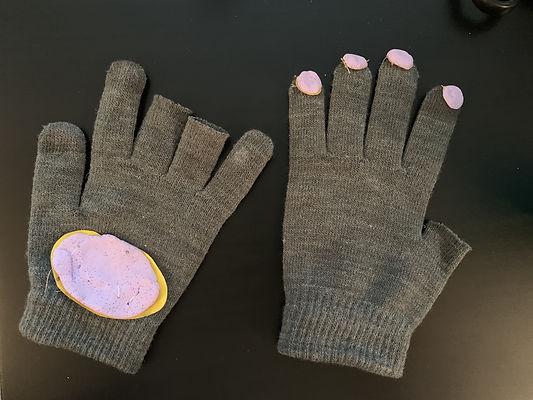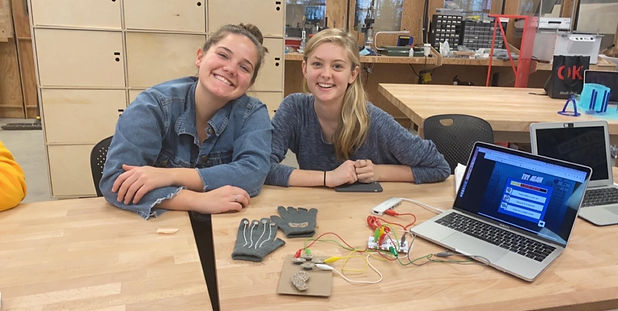
SmartGlove
Imagining a more inclusive way to play.
OVERVIEW
As the final project for our Physical Prototyping Techniques class, my team built and tested a prototype of wearable glove game controllers. We prototype and test the wearable controller to evaluate the usability and desirability of the concept.
MY ROLE
THE PLAN
Going into this project, we planned to make a pair of wearable glove controllers that users could use to play a spider man computer game by moving their hands as spiderman does.

We quickly decided to broaden the scope of the project to create a pair of glove controllers that would work with most computer games, requiring up, down, left, and right keys as well as the space bar.
MAPPING THE BUTTONS
We started by asking other students what hand motions they would make to hit the up, down, left, right keys and space bar without touching the keyboard. Based on their responses, we mapped each key onto hands and sketched the movements a user might make to hit the buttons.



CREATING THE PROTOTYPE
We Laser Cut buttons and sewed them onto a pair of gloves before covering the cardboard with a conductive clay.

WIZARD OF OZ
We conducted Wizard of Oz testing In order to evaluate the desirability and usability of the SmartGloves.
Task 1: Spiderman Game
The spiderman uses only the space bar, so only tests one of the gloves.
Task 2: Dance Dance Revolution
Dance Dance Revolution uses the up, down, left, right keys only, it tests the other glove.
Task 3: Asteroids
The Asteroids game uses up, down, left, right keys as well as the spacebar so it tests how the gloves can interact with each other.
Over the course of the three tasks, we tested all the buttons in games with various levels of difficulty.

WIZARD OF OZ
While the participant thought that using the gloves was fun and that the concept of the project was very exciting, they also reported their hands getting tired and sore after the 15-minute usability test. They felt that the glove didn’t fit their hand properly and that the buttons were too small for their fingers.
Desirability: Highly desirable concept
Usability: Some issues with fit
EPIPHANY
we could never design a one-size-fits-all solution for the smart gloves.
NEW PLAN
With the realization that we had a flawed idea from the start, we made one big change to the prototype:
We decided to free the buttons from the glove.
We also made changes to the size of the button based on feedback from the Wizard of Oz testing and decided to add Arduino so that we could hook our new controller up to the computer to actually play the game.
FINAL PRODUCT
Each button consists of a wire coil, a cardboard backing, and two magnets that are used to connect the button to other surfaces. The buttons can be attached and moved around a cardboard control board or can attach to clothes, including gloves
The magnetic buttons allow the user to truly customize their own experience, and play in a way that fits their individual needs and abilities.



REFLECTION
What worked: Lots of people were really excited about the idea and had fun using the prototype. Based on responses of usability testing participants and other students in the class, we believe the concept is highly desirable.
What didn’t work: The biggest challenge of the project was trying to make a glove that could fit everybody’s hand. When we realized this was impossible, we switched to a more inclusive solution with the magnetic buttons, which alleviated many of these problems. However, the prototype had too many wires making it hard to switch users.
What would we do differently: Given more time, we also would have liked to have taken a more participatory approach to the design process, potentially conducting workshops with people of diverse ability in order to give users a stronger voice in our design process.
